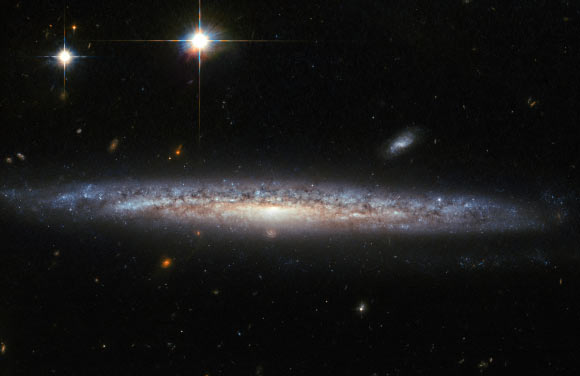The NASA/ESA Hubble Space Telescope has taken a picture of the spiral galaxy NGC 5714.
NGC 5714 is a magnitude 13.4 galaxy in the constellation of Boötes, 124.3 million light-years away from us.
Also known as LEDA 52307 and SDSS J143811.51+463817.6, the galaxy was discovered by German-born British astronomer William Herschel on May 12, 1787.
NGC 5714 is classified as a Sc-type spiral galaxy, but its spiral arms are almost impossible to see, as the galaxy presents itself at an almost perfectly edge-on angle.
In 2003, a faint supernova called SN 2003dr was observed below the central bulge of NGC 5714.
Supernovae are the huge, violent explosions of dying stars, and the one that exploded in NGC 5714 — not visible in this much later image — was classified as a Type Ib/c supernova.
SN 2003dr was particularly interesting because its spectrum showed strong signatures of calcium.
Calcium-rich supernovae are rare and hence of great interest to astronomers.
Astronomers still struggle to explain these particular explosions as their existence presents a challenge to both observation and theory.
In particular, their appearance outside of galaxies, their lower luminosity compared to other supernovae, and their rapid evolution are still open questions for researchers.
The color image of NGC 5714 was made from separate exposures taken in the visible region of the spectrum with Hubble’s Advanced Camera for Surveys (ACS).
Two filters — a blue (F435W) filter and a wide V-band (F606W) filter — were used to sample various wavelengths.
The color results from assigning different hues to each monochromatic image associated with an individual filter.
Source: Sci News

































Leave a Comment
You must be logged in to post a comment.